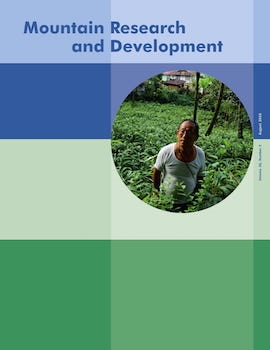Large cardamom (Amomum subulatum) is an economically valuable, ecologically adaptive, and agro-climatically suitable perennial cash crop grown under tree shade in the eastern Himalayas. In Sikkim, India, the focus of this study, large-cardamom production peaked early in the 21st century, making India the largest producer in the world, but dropped sharply after 2004; Nepal is now the largest producer. This crop is an important part of the local economy, contributing on average 29.2% of the income of households participating in this study. Farmers and extension agencies have worked to reverse its decline since 2007, and thus, there is a steady increase in production and production area. After reviewing the literature, we carried out extensive field research in 6 locations in Sikkim in 2011–2013 to investigate the causes of this decline and measures being undertaken to reverse it, using a combination of rapid rural appraisal, participatory rural appraisal, structured questionnaire, and field sampling techniques. Study participants attributed the decline in large-cardamom farming to 4 broad types of drivers: biological, socioeconomic, institutional/governance-related, and environmental/climate-change-related. Altered seasons, erratic or scanty rainfall, prolonged dry spells, temperature increase, soil moisture loss, and increasing instances of diseases and pests were prominent factors of climate change in the study region. Multistakeholder analysis revealed that development and implementation of people-centered policy that duly recognizes local knowledge, development of disease-free planting materials, training, subsidies, and improved irrigation facilities are central to improving cardamom farming and building socioeconomic and ecological resilience.
How to translate text using browser tools
1 August 2016
Declining Large-Cardamom Production Systems in the Sikkim Himalayas: Climate Change Impacts, Agroeconomic Potential, and Revival Strategies
Ghanashyam Sharma,
Uma Partap,
D. R. Dahal,
Durga P. Sharma,
Eklabya Sharma
climate change impacts
household economy
Large cardamom
revival strategy
Sikkim Himalayas





